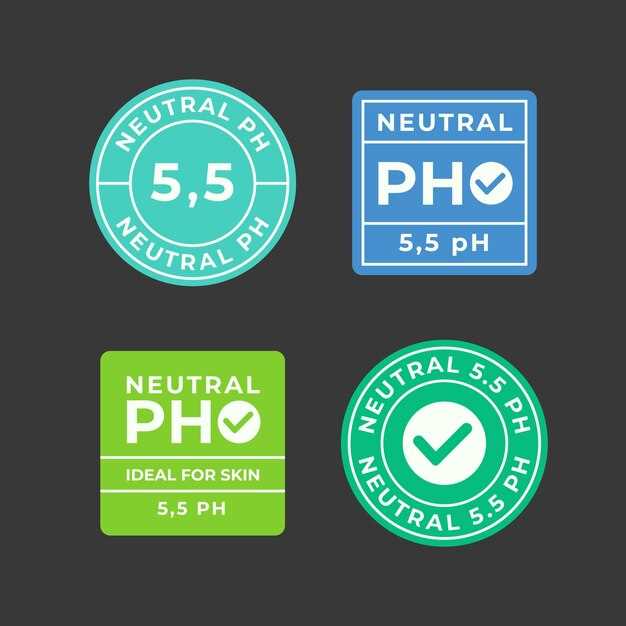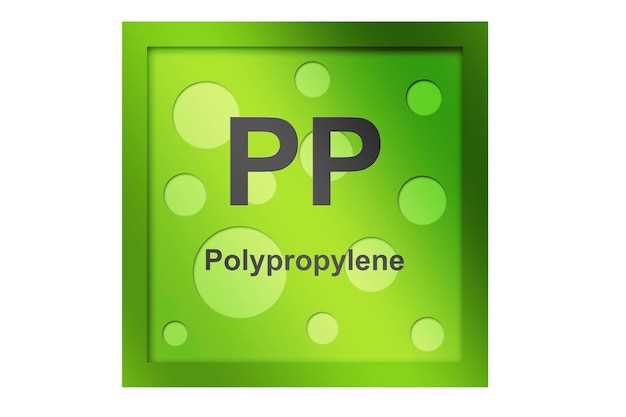
Discover the power of hydrochlorothiazide and its remarkable log p value.
Experience the benefits:
1. Enhanced bioavailability: Hydrochlorothiazide’s log p value ensures better absorption and utilization of the medication in your body, maximizing its therapeutic effects.
2. Optimal blood pressure control: With hydrochlorothiazide’s log p value, you can achieve optimal blood pressure regulation, helping you lead a healthier and more active lifestyle.
3. Reduced edema and swelling: Hydrochlorothiazide’s log p value acts as a powerful diuretic, reducing excess water retention and relieving edema and swelling for improved comfort.
4. Proven efficacy: Backed by scientific research, hydrochlorothiazide’s log p value has demonstrated its effectiveness in managing various conditions, including hypertension and congestive heart failure.
Don’t miss out on the incredible benefits of hydrochlorothiazide’s log p value. Consult your healthcare professional today and discover how this remarkable medication can improve your well-being.
About Hydrochlorothiazide
Hydrochlorothiazide is a medication that belongs to a class of drugs called thiazide diuretics. It is commonly used to treat high blood pressure (hypertension) and to reduce fluid retention (edema) in conditions such as congestive heart failure and kidney disorders. Additionally, it is sometimes prescribed to prevent kidney stones and to manage diabetes insipidus.
What is a Log p value?
The Log p value of a drug is a measure of its lipophilicity, or its ability to dissolve in fat. It is a calculated value that indicates the partitioning of a drug between an organic solvent and water. A high Log p value indicates that a drug has a greater affinity for fat, while a low Log p value suggests a greater affinity for water.
Importance of Log p value
The Log p value of a drug is an important characteristic that can impact its pharmacokinetics and therapeutic efficacy. Understanding the Log p value can help researchers and clinicians predict how a drug will distribute within the body, its absorption into the bloodstream, and its ability to cross cell membranes.
- Enhanced Drug Stability: Drugs with higher Log p values tend to have improved stability, as they are less likely to undergo degradation in aqueous environments.
- Improved Bioavailability: A higher Log p value can enhance a drug’s bioavailability, or the fraction of the administered dose that reaches the systemic circulation, by facilitating its absorption through the gastrointestinal tract.
- Targeted Drug Delivery: The Log p value can also influence a drug’s ability to target specific tissues or organs. Drugs with appropriate Log p values can more easily penetrate cell membranes and reach their intended sites of action.
Given its significance in drug development and formulation, the Log p value of hydrochlorothiazide has been extensively studied and characterized. Understanding the Log p value of hydrochlorothiazide can provide valuable insights into its pharmacological properties and help optimize its therapeutic benefits.
Importance of Log p value
The Log p value of a drug is an important factor in determining its solubility and permeability. It represents the logarithm of the partition coefficient, which is a measure of how a drug distributes between two immiscible phases, typically oil and water.
Enhanced Drug Stability
A drug with a suitable Log p value can exhibit enhanced stability, as it is less prone to degradation and can withstand various environmental conditions. This is crucial for ensuring the effectiveness and longevity of the drug.
Improved Bioavailability
The Log p value also plays a role in improving the bioavailability of a drug. A higher Log p value can enhance the drug’s solubility, allowing it to dissolve more easily and be absorbed by the body more efficiently. This leads to higher concentrations of the drug in the bloodstream, resulting in improved therapeutic effects.
In addition, drugs with an optimal Log p value can bypass certain biological barriers, such as the blood-brain barrier, which allows for targeted drug delivery to specific sites in the body.
| Log p value range | Drug distribution characteristics |
|---|---|
| Less than 0 | Preferentially distributed in water |
| Between 0 and 2 | Amphiphilic distribution |
| Greater than 2 | Preferentially distributed in lipids |
By considering the Log p value during drug development and formulation, pharmaceutical companies can optimize the drug’s properties for better stability, solubility, and bioavailability. This ultimately leads to more effective and efficient treatments for patients.
Benefits
Enhanced Drug Stability: The log p value of hydrochlorothiazide plays a crucial role in enhancing the stability of the drug. It helps to ensure that the drug remains effective and does not degrade over time or under certain environmental conditions. This is particularly important in maintaining the potency of the medication. With enhanced drug stability, patients can have confidence in the effectiveness of hydrochlorothiazide.
Enhanced Drug Stability
The log p value of hydrochlorothiazide plays a significant role in enhancing the drug stability. Log p value refers to the logarithm of the partition coefficient, which indicates the solubility and distribution of a drug in different environments.
By having an optimal log p value, hydrochlorothiazide can maintain its stability and efficacy over time. This is particularly crucial for medications that require long-term storage or have a longer shelf life.
With enhanced drug stability, hydrochlorothiazide can withstand various environmental conditions, such as temperature fluctuations and exposure to light and moisture. This ensures that the drug remains effective and safe for consumption even after extended periods.
Furthermore, the enhanced drug stability of hydrochlorothiazide contributes to reducing the risk of degradation, which can lead to the formation of impurities or decrease in potency. This means that patients can rely on the drug’s consistent therapeutic effects without worrying about any potential loss of efficacy.
In summary, the optimal log p value of hydrochlorothiazide plays a crucial role in enhancing the drug stability. This ensures its effectiveness and safety, allowing patients to rely on the medication for their treatment needs.
Improved Bioavailability
The concept of improved bioavailability refers to the ability of a drug to reach the systemic circulation and produce an effect. Bioavailability plays a crucial role in determining the effectiveness of a medication. Hydrochlorothiazide, with its optimal Log p value, offers enhanced bioavailability.
When a drug has improved bioavailability, it has a higher chance of reaching its target site in the body and exerting its desired effects. This is particularly important for hydrochlorothiazide, a medication commonly used to treat hypertension and edema.
By improving the bioavailability of hydrochlorothiazide, it is possible to increase its therapeutic benefits. This means that patients can experience a more potent and reliable response to the drug, leading to better management of their condition.
The improved bioavailability of hydrochlorothiazide also results in more predictable and consistent drug concentrations in the body. This allows for better control of dosing and minimizes the risk of under or overdosing.
In summary, hydrochlorothiazide’s improved bioavailability, due to its optimal Log p value, is crucial for ensuring the drug reaches its target site and exerts its therapeutic effects. It enhances treatment outcomes and provides patients with a more reliable and effective medication option.
Targeted Drug Delivery

Hydrochlorothiazide, with its optimal Log p value, offers the advantage of targeted drug delivery. This means that the medication can be specifically delivered to the intended site within the body. Targeted drug delivery enables more precise and effective treatment, as it reduces the potential for side effects and enhances therapeutic outcomes.
By utilizing targeted drug delivery, hydrochlorothiazide can be directed to the exact location where it is needed, such as the kidneys for treating hypertension or the lymph nodes for addressing lymphedema. This approach maximizes the drug’s efficacy while minimizing its impact on other parts of the body, thereby increasing patient safety and comfort.
With targeted drug delivery, the dosage required to achieve the desired therapeutic effect is minimized, reducing the overall quantity of medication needed. This not only improves cost-effectiveness but also decreases the chances of adverse effects associated with higher dosages of drugs.
Furthermore, targeted drug delivery allows for sustained release of hydrochlorothiazide, ensuring a constant concentration of the medication at the target site over an extended period. This provides a more stable and consistent treatment regimen, further optimizing patient outcomes and overall medication efficacy.
In summary, targeted drug delivery is a key benefit of hydrochlorothiazide due to its optimal Log p value. This innovative approach revolutionizes drug delivery by specifically targeting the affected area, minimizing side effects, and enhancing treatment effectiveness.
Application
Hydrochlorothiazide, with its desirable Log p value, finds broad applications in the pharmaceutical industry. Here are some of the areas where Hydrochlorothiazide is widely used:
Hypertension Treatment
One of the primary applications of Hydrochlorothiazide is in the treatment of hypertension, commonly known as high blood pressure. It is often prescribed as a first-line medication to effectively reduce and control elevated blood pressure levels. Hydrochlorothiazide works by increasing the excretion of sodium and water from the body, leading to a decrease in blood volume and ultimately lowering blood pressure.
Edema Management
Hydrochlorothiazide is also used for managing edema, a condition characterized by excessive fluid retention in the body tissues. It helps promote diuresis, which is the increased production of urine, leading to the removal of excess fluid. This can be particularly beneficial in conditions such as congestive heart failure, liver cirrhosis, and kidney dysfunction.
Moreover, Hydrochlorothiazide has been shown to have favorable outcomes in the treatment of calcium nephrolithiasis, a type of kidney stone caused by excessive calcium in the urine. Its diuretic properties facilitate the elimination of excess calcium and reduce the risk of stone formation.
With its wide range of applications, Hydrochlorothiazide has become an integral part of the pharmaceutical industry, helping improve the health and well-being of millions of people worldwide.
Pharmaceutical Industry

The pharmaceutical industry plays a crucial role in the development and production of medications and other healthcare products. It is a highly regulated industry that focuses on bringing safe and effective medicines to the market. Pharmaceutical companies invest heavily in research and development to discover new drugs and improve existing treatments.
In recent years, there has been a growing demand for innovative and advanced drug delivery systems. The use of technologies such as targeted drug delivery has revolutionized the pharmaceutical industry. This approach allows for the administration of drugs directly to the affected area, increasing their efficacy and reducing potential side effects.
The Log p value of hydrochlorothiazide is an important factor for pharmaceutical companies. It refers to the logarithm of the partition coefficient, which measures a drug’s solubility and permeability. A higher Log p value indicates better absorption and bioavailability, increasing the effectiveness of the drug.
Benefits of Log p Value in Pharmaceutical Industry
By considering the Log p value of hydrochlorothiazide, pharmaceutical companies can achieve several benefits:
- Enhanced Drug Stability: A higher Log p value indicates better stability of the drug, reducing the risk of degradation and ensuring its effectiveness over a longer period of time.
- Improved Bioavailability: A drug with a higher Log p value has better absorption and distribution in the body, allowing it to reach its target site more effectively.
- Targeted Drug Delivery: The Log p value helps pharmaceutical companies design drug delivery systems that can specifically target certain tissues or cells, increasing the drug’s therapeutic effect.
In conclusion, the Log p value of hydrochlorothiazide is of great importance in the pharmaceutical industry. It helps pharmaceutical companies develop and produce drugs with enhanced stability, improved bioavailability, and targeted drug delivery. These advancements benefit patients by providing more effective treatments with reduced side effects.
